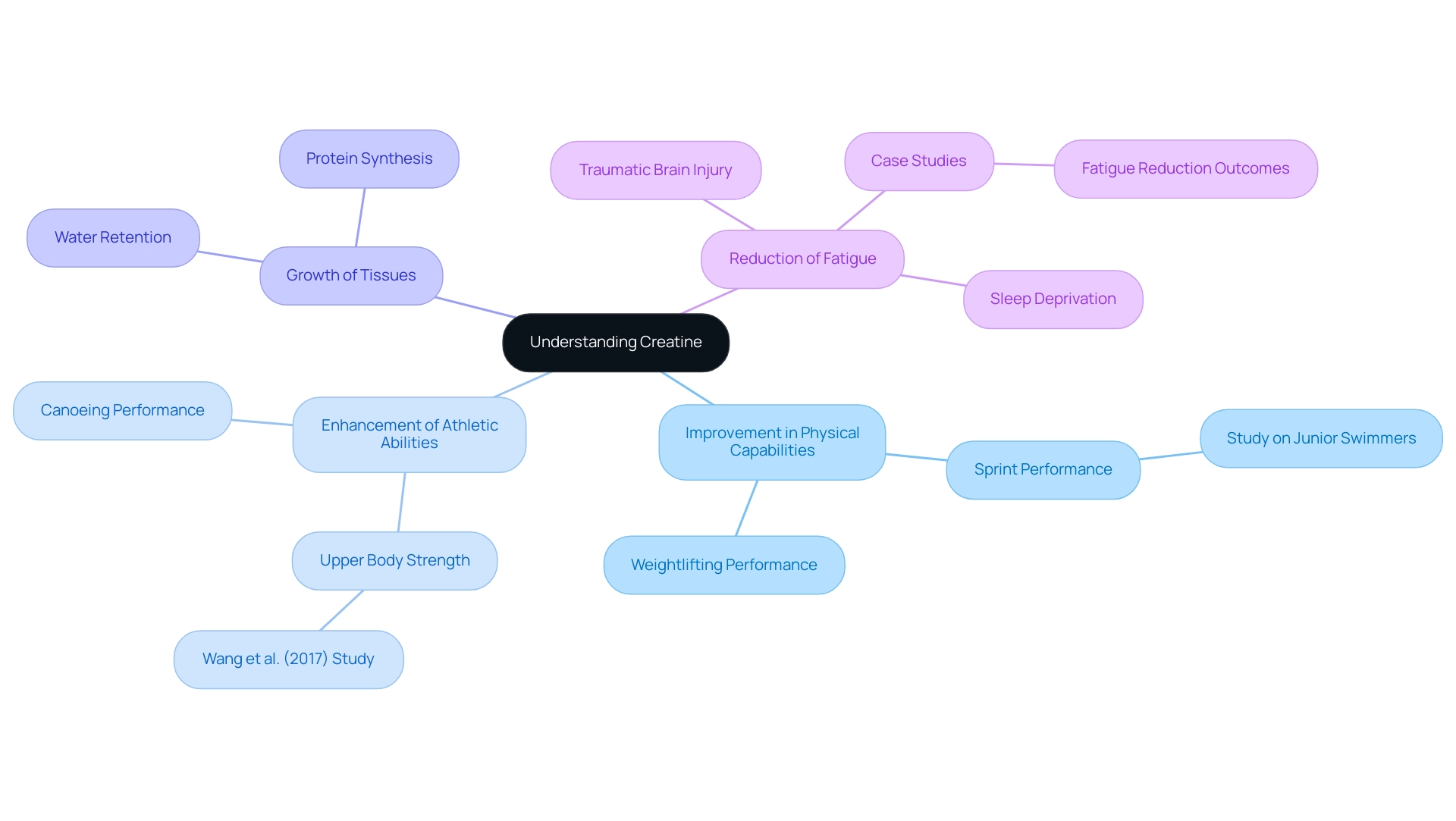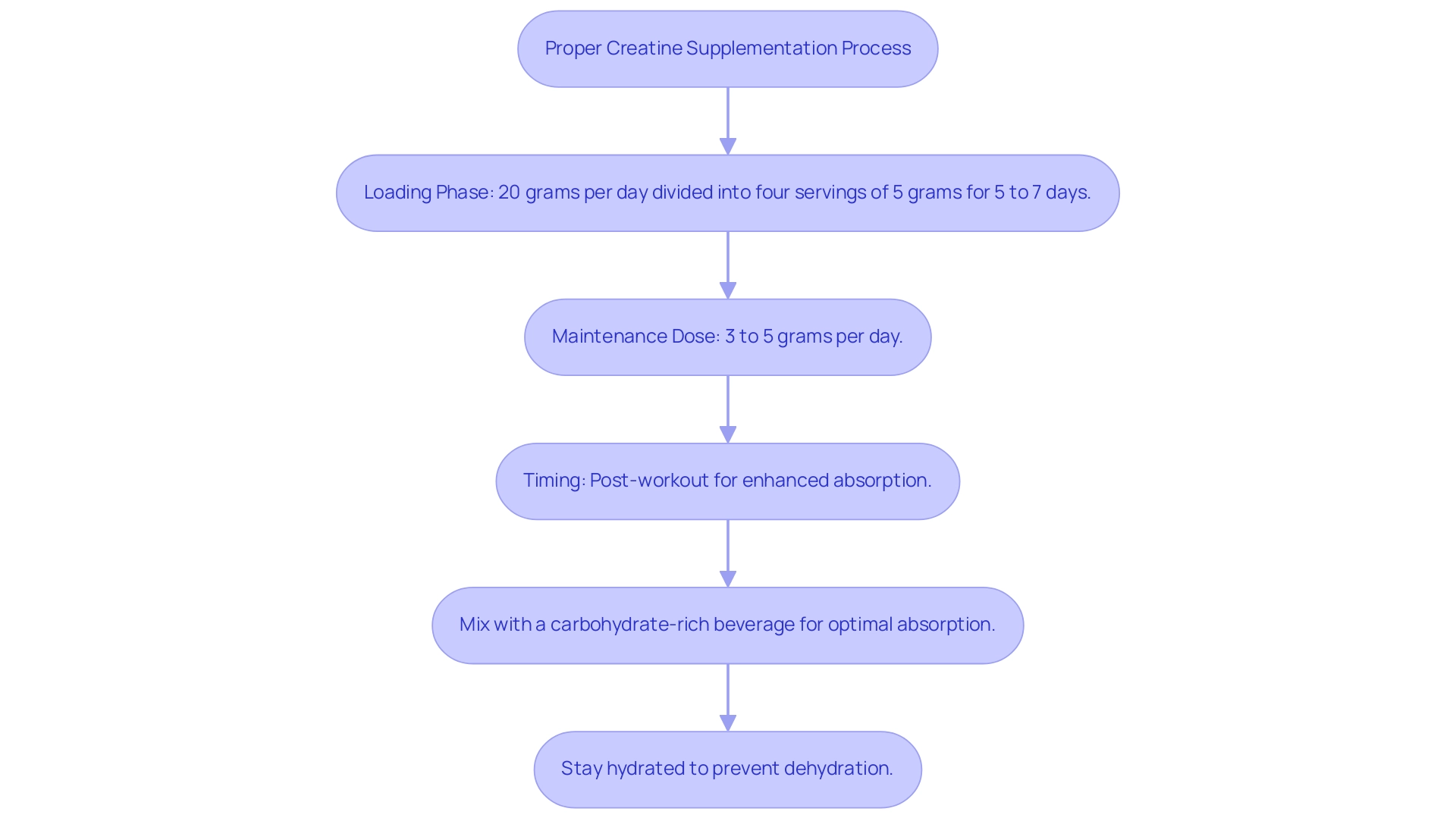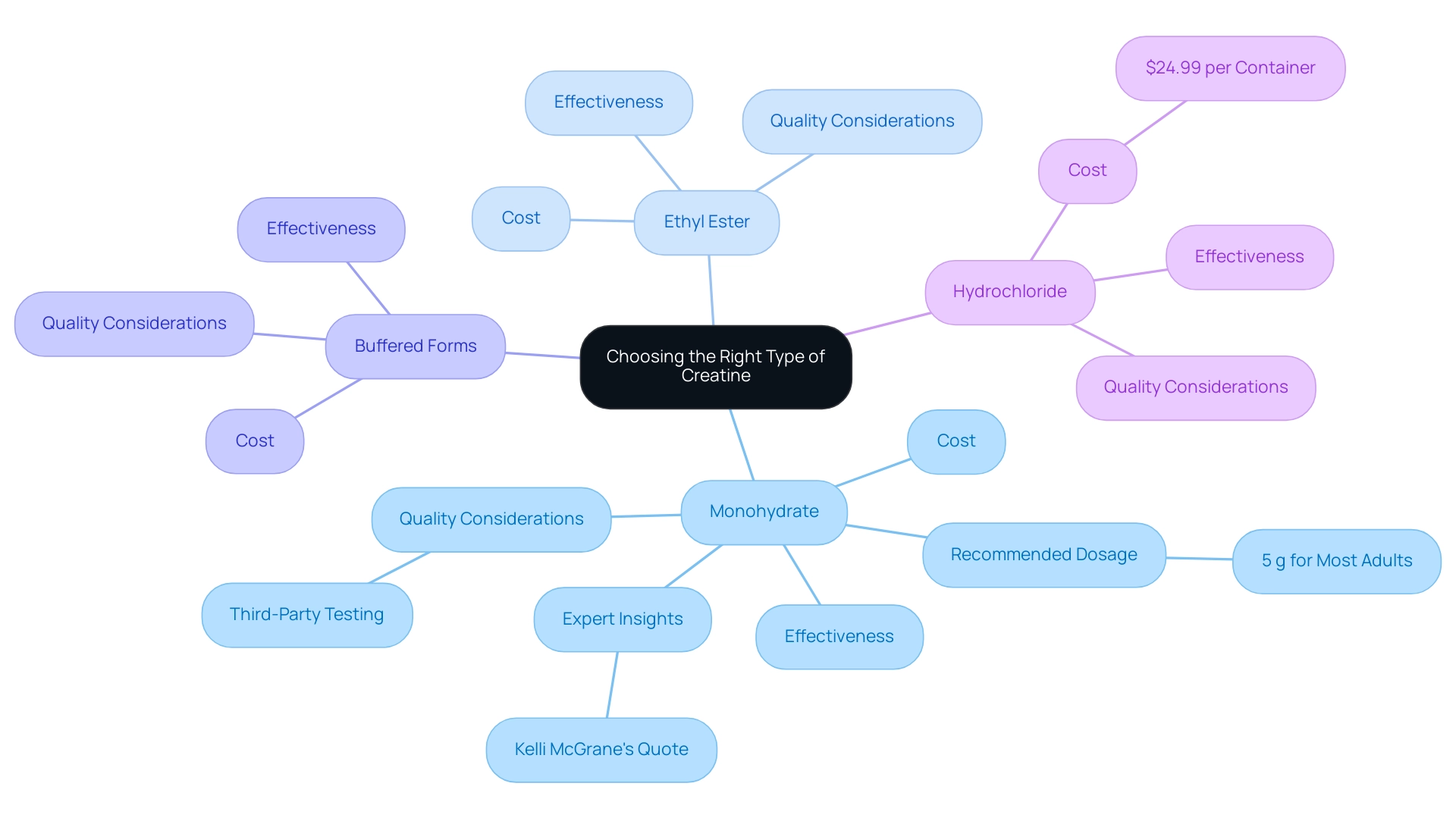Introduction
Creatine has emerged as a vital supplement in the realm of sports nutrition, renowned for its ability to enhance physical performance and support muscle growth. As a naturally occurring compound primarily found in muscle cells, creatine plays a crucial role in energy production, particularly during high-intensity activities. Numerous studies have demonstrated its effectiveness, revealing significant improvements in athletic performance across a variety of sports.
This article delves into the multifaceted benefits of creatine, offers guidance on proper dosing and timing, and highlights key considerations when selecting the right supplement. By understanding the science behind creatine and following best practices, individuals can unlock their full potential and achieve their fitness goals.
1. Understanding Creatine: Benefits and Mechanisms
Creatine is a naturally occurring compound predominantly located in muscle cells, where it plays a vital role in the production of adenosine triphosphate (ATP), the primary energy carrier essential for cellular functions. Its supplementation has been connected to significant improvements in physical capabilities, particularly in high-intensity activities that demand quick bursts of energy, such as sprinting and weightlifting. A study evaluating 18 junior competitive swimmers discovered that those who added a supplement swam notably quicker after the first heat, showing a distinct improvement compared to those on a placebo.
Furthermore, research by Wang et al. (2017) on high school canoeists revealed that a daily dosage of 20 grams of a certain supplement over six days led to notable increases in upper body strength, showcasing its potential to enhance athletic abilities. Quality assessment of included studies was performed using the
Cochrane Collaboration’s risk of bias assessment tool, ensuring the reliability of these findings.
Aside from efficacy, supplementation encourages growth of tissues by enhancing water retention inside cell structures and promoting protein synthesis. Moreover, case studies indicate that this substance can significantly reduce fatigue and tiredness in various contexts, such as traumatic brain injury and sleep deprivation. This highlights its capacity as an effective energy booster.
As Carissa Stephens, R.N., CCRN, CPN, notes, 'A creatinine blood test measures the level of creatinine, a waste product, in the blood.' By comprehending these advantages, you can better value how to take creatine to aid your fitness goals, whether your aim is to enhance athletic performance or boost physical mass.
2. How to Properly Take Creatine: Dosage and Timing
To maximize the benefits of this supplementation, it is advisable to understand how to take creatine by initiating a loading phase consisting of:
- 20 grams per day, divided into four servings of 5 grams each, for a duration of 5 to 7 days.
This method efficiently fills tissue reserves of phosphocreatine.
Following this loading phase, you should understand how to take creatine with a recommended maintenance dose of 3 to 5 grams per day.
Recent studies endorse the practice of consuming supplements post-workout, providing insights on how to take creatine effectively, as this timing seems to enhance the absorption of these substances by muscle cells, promoting improved performance outcomes. In fact, studies indicate that mean power per repetition can rise by +5.1 ± 9.1% with appropriate supplementation. For optimal absorption, mixing this supplement with a carbohydrate-rich beverage can be beneficial.
Furthermore, it is essential to sustain proper hydration while using this supplement, as it pulls water into bodily tissues, possibly heightening the risk of dehydration. A case study titled 'Benefits of Creatine Loading' discusses how to take creatine to maximize muscle stores, which can lead to significant enhancements in muscle mass, strength, and a reduced risk of sport-related injuries. As stated by Makayla Meixner, MS, RDN, 'Following these guidelines can lead to enhanced athletic ability.'
Adhering to these recommendations on how to take creatine can result in substantial improvements in athletic performance.
3. Choosing the Right Type of Creatine
When choosing a supplement, it is crucial to consider monohydrate, which stands out as the most researched and widely utilized form due to its proven effectiveness and affordability. A recommended dosage of 5 g for most adults is supported by studies demonstrating the advantages of this supplement. In comparison to alternatives such as ethyl ester or buffered forms, which may offer certain benefits, these options generally entail a higher cost and lack extensive scientific validation.
For instance, hydrochloride is priced at $24.99 per container, making it a more costly option without adequate supporting evidence. To ensure the highest quality, consumers should prioritize products from reputable brands that provide third-party testing, confirming their purity and potency. Insights from the case study titled 'Selecting the Best Creatine Supplements' highlight the importance of interviewing health professionals and conducting extensive market research to identify products that meet high standards of quality, safety, and efficacy.
Moreover, registered dietitian Kelli McGrane emphasizes the importance of product consistency, noting that,
I found this product to be very similar to Thorne’s supplement in that it needs to be stirred the whole time you’re drinking it.
Additionally, while some individuals may choose a loading phase to understand how to take creatine in order to rapidly increase muscle stores, current research suggests this may not be necessary for maximum benefit. Reading customer reviews can also provide valuable insights on the effectiveness of particular products, aiding in informed decision-making.
4. Monitoring Your Progress and Adjusting Dosage
Tracking your progress during the use of the compound is essential for maximizing its advantages. Start by carefully monitoring your workouts, recording any enhancements in strength, endurance, or body mass. Regularly taking body measurements and progress photos every few weeks can provide a visual representation of your changes.
Studies suggest that supplementation with this compound can result in a comparable increase in tissue mass of around 20% after either 3 g/day for 28 days or 20 g/day for 6 days, highlighting the significance of regular monitoring. According to D.G.C., who has conducted extensive research in this area, effective monitoring is essential to understanding how this supplement affects individual capabilities. If you encounter a plateau in your results or notice a stagnation in muscle gain after several weeks of consistent use, it may be time to consider adjusting your dosage.
Increasing your intake to between 5 to 10 grams per day can be beneficial, particularly if you began with a lower amount. Furthermore, a thorough examination of more than
500 studies on the supplement emphasizes that approximately 70% of these studies indicate notable enhancements in performance metrics, confirming its effectiveness as a nutritional ergogenic aid. Always prioritize listening to your body and seek guidance from a healthcare professional if any concerns arise or if you experience adverse effects.
Keep in mind, other types of this compound are not better than monohydrate, making it the top choice for enhancing performance. Adopting these practices not only aids in effectively monitoring your progress but also aligns with current best practices in creatine supplementation.
Conclusion
Creatine stands out as a powerhouse supplement in the world of sports nutrition, offering a range of benefits that can significantly enhance athletic performance and support muscle growth. Its role in ATP production makes it particularly effective during high-intensity activities, as evidenced by numerous studies demonstrating its positive impact on speed, strength, and overall physical performance. With proper dosing and timing, individuals can maximize these benefits, paving the way for improved workout outcomes and fitness achievements.
Selecting the right type of creatine is equally important.
- Creatine monohydrate remains the most researched and reliable option, providing proven results without the added cost of alternative forms.
- By prioritizing quality and adhering to recommended dosages, users can ensure they are making informed choices that contribute to their fitness goals.
Monitoring progress during supplementation is crucial for optimizing results.
- Regularly tracking performance metrics and making adjustments as needed can lead to continued improvements and prevent plateaus.
- Whether aiming to boost athletic performance or increase muscle mass, understanding how to effectively utilize creatine can unlock greater potential in any fitness journey.
The commitment to informed supplementation, in conjunction with consistent monitoring, will ultimately yield the best outcomes for those seeking to enhance their physical capabilities.


































